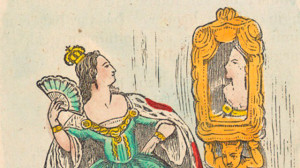There’s a story about the Tang dynasty painter Wu Daozi that Rebecca Solnit remembers well. It is said that once, when Daozi presented a finished mural to the emperor, he pointed out a cave in the painted landscape and then set forth and disappeared into it. “All readers are Wu Daozi,” Solnit writes in her latest, The Faraway Nearby. It’s a book as much about the stories we tell, empathy, and the nature of storytelling, as it is about Solnit’s ailing mother, Alzheimer’s, and one hundred pounds of apricots.
“They were an impressive sight,” Solnit writes. “A mountain of apricots […] upholstered in a fine velvet […]” The apricots are the last harvest from her mother’s tree, picked by her brother before he goes about selling their childhood house and installing their mother in a home for the elderly. At first, Solnit thinks of the apricots as a bountiful inheritance, but as the apricots begin to rot they remind her of something else: “[Fairy tales] are full of overwhelming piles and heaps that need to be contended with, the roomful of straw the poor girl in “Rumpelstiltskin” needs to spin into gold overnight, the thousand pearls scattered into the forest moss the youngest son needs to gather in order to win the princess, the mountain of sand to be moved by teaspoon.”

An engraving after a drawing by Augusta Innes Withers. Image: Wikimedia Commons
A task, a tale.
The Faraway Nearby is easily described as a fairy tale. Solnit’s mother is like “a book coming apart, pages drifting away, phrases blurring, letters falling off, the paper returning to white, a book disappearing from the back because the newest memories faded first, and nothing was being added.” Solnit as the hero of the tale needs breast surgery and goes under (in fairy tale terms takes a journey to the underworld) and emerges a different person. She is then beckoned to Iceland, where “everyone walks on water, which is solid. Ice is blue. Snow insulates. Water crystallizes into floating mountains that destroy whatever collides with them […] Nothing decays, and so time stops for the dead, if not for the living.”




